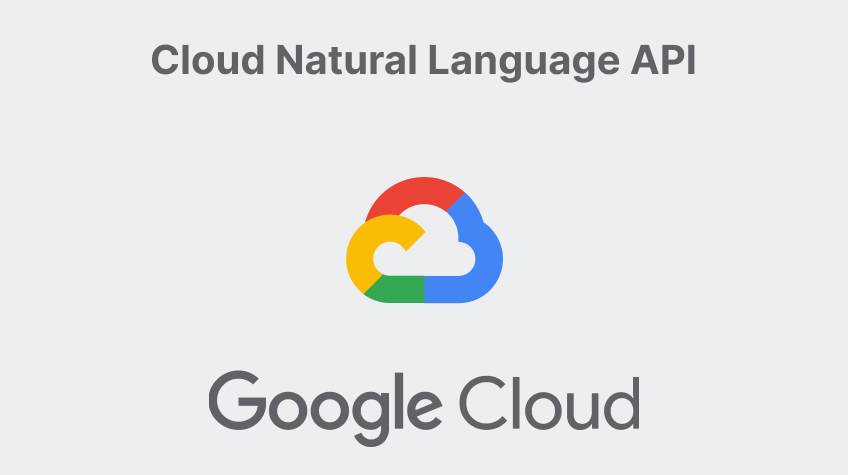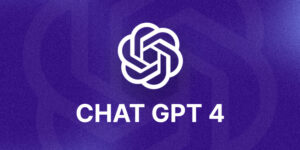
In a world inundated with text-based data, harnessing the power of the Google Cloud Natural Language API has become a game-changer. This comprehensive guide, “Harnessing the Power of Google Cloud Natural Language API,” is your key to unlocking its potential. We’ll explore the API’s versatile capabilities, from sentiment analysis to entity recognition and syntax parsing.
With textual data permeating every aspect of our digital lives, mastering this tool is no longer an option but a necessity. Join us on a journey through natural language processing, discover real-world applications, best practices, and optimization techniques, and step into a world where language meets data, opening up new horizons of understanding.
What is Google Cloud Natural Language API?
The Google Cloud Natural Language API is a cutting-edge, cloud-based service that empowers businesses and developers to unravel the complexities of human language. It offers a versatile suite of natural language processing (NLP) tools to analyze and understand text data comprehensively. With this API, users can perform tasks such as sentiment analysis to gauge the emotional tone of the text, entity recognition to identify and categorize key elements, and syntax analysis to parse sentence structure.
This robust tool is a game-changer in our data-driven world, facilitating more informed decision-making, enhancing customer experiences, and automating various language-related tasks. Its ability to extract valuable insights from textual data makes it a vital asset for industries ranging from e-commerce and customer support to media analysis. The Google Cloud Natural Language API transforms the written word into a valuable resource for knowledge and understanding.
Also See: What is e-Commerce Cloud | Integration to Grow Online Business
Getting Started with Google Cloud Natural Language API
As you begin your journey with the Google Cloud Natural Language API, it’s essential to establish a solid foundation. This begins by setting up your Google Cloud Platform (GCP) account, the gateway to many Google Cloud services, including the Natural Language API. Once your GCP account is in place, the next step involves enabling the Natural Language API within your project settings. This straightforward process ensures that you gain access to the powerful text analysis capabilities the API offers.
As you venture further, gaining a grasp of authentication and access mechanisms becomes vital. Google Cloud implements robust security measures to safeguard your data and API usage. You’ll delve into methods for authenticating your requests, including generating API keys or utilizing service account credentials. These security measures ensure that your interactions with the Natural Language API remain productive and secure, protecting your valuable data assets throughout your exploration of its capabilities.
Core Features of the Google Cloud Natural Language API
Exploring the Google Cloud Natural Language API reveals a versatile toolkit for comprehensive text analysis. This API is a robust resource for understanding the intricacies of human language, making it invaluable in today’s data-driven landscape. With capabilities ranging from sentiment analysis to entity recognition and syntax analysis, it empowers users to extract valuable insights from textual data.
Sentiment analysis is a core function, allowing users to gauge emotional tones within text. This is invaluable for assessing public opinion, customer feedback, and brand sentiment. Entity recognition identifies and categorizes essential elements like names, dates, and locations, providing critical context to the text. Syntax analysis delves into grammatical and structural aspects, facilitating deeper linguistic understanding. Together, these functions showcase how language meets data, empowering businesses and developers to unlock the true potential of textual information for more informed decisions and enhanced user experiences.
Practical Use Cases
A. Real-world applications and scenarios where the API can be beneficial:
The Google Cloud Natural Language API finds its stride in many real-world applications. For instance, in media analysis, it aids in tracking and understanding public sentiment towards news articles or social media posts, facilitating more targeted content creation and crisis management. The API can mine customer feedback in market research, uncovering valuable insights for product development and marketing strategies.
Moreover, it’s a potent tool in content recommendation systems, ensuring users receive personalized content tailored to their preferences. The API’s versatility extends to academic research, where it assists in textual data analysis, simplifying the extraction of meaningful patterns and trends.
B. Industry-specific examples
In e-commerce, the API enables sentiment analysis of customer reviews, aiding in product recommendations and identifying areas for improvement. For customer support, it streamlines ticket classification and routing by recognizing key entities and sentiments within support inquiries, expediting issue resolution. The API can help pars medical records and extract vital information for clinical decision support systems in the healthcare sector.
Financial institutions benefit from entity recognition in compliance and risk assessment, while legal professionals use it for contract analysis. These industry-specific examples demonstrate the broad utility of the Natural Language API across diverse sectors, enhancing decision-making and customer experiences.
How to Make API Requests
Making API Requests for Google Cloud Natural Language API
To make API requests to the Google Cloud Natural Language API, follow these simplified steps:
- Set up Your Environment: Ensure you have the environment for making HTTP requests. This typically involves having a programming environment (e.g., Python) or a tool like Postman.
- Generate API Key: In your Google Cloud Platform (GCP) project, generate an API key and enable billing. This key will be used to verify the authenticity of your request.
- Construct the Request: Create an HTTP POST request for the API endpoint. For sentiment analysis, use https://language.googleapis.com/v1/documents:analyzeSentiment?key=YOUR_API_KEY. Replace YOUR_API_KEY with your actual API key.
- Prepare the Request Body: In the request payload, specify the text you want to analyze. You can also define the features you want, such as sentiment analysis, entity recognition, or syntax analysis.
- Send the Request: Submit the POST request to the API endpoint. The API will process your request and return the results in JSON format.
By following these steps, you can easily make API requests to the Google Cloud Natural Language API without needing specific code snippets.
Related Post: The Advantages of Using Node.js for Building APIs
Best Practices for Google Cloud Natural Language API
When working with the Google Cloud Natural Language API, several best practices can enhance your API usage:
A. Optimizing API Usage:
- Batch Requests: Instead of sending individual requests for each piece of text, batch multiple requests together to reduce latency and improve efficiency.
- Caching: Align caching mechanisms to store and reuse results for identical text inputs, minimizing redundant API calls.
Asynchronous Processing: Utilize asynchronous processing for long-running tasks to prevent timeouts and maximize throughput.
B. Handling and Analyzing Large Text Volumes
- Pagination: Implement pagination when dealing with extensive datasets to prevent memory problems.
- Data Preprocessing: Clean and preprocess text data before analysis to improve accuracy and reduce noise.
- Concurrency: Implement multithreading or parallel processing to analyze multiple text items simultaneously, reducing processing time for large volumes of text.
By incorporating these best practices, you can optimize your usage of the Natural Language API, ensuring efficient and effective text analysis for various applications and scenarios.
Limitations and Considerations for Google Cloud Natural Language API
A. API Limitations:
- Language Support: The API’s language support is extensive but may only cover some languages comprehensively.
- Accuracy: While the API is powerful, it may only sometimes provide 100% accuracy in sentiment analysis or entity recognition, especially with complex text.
- Text Length: There are limits on the length of text that can be analyzed in a single request (e.g., 5,000 characters per request).
B. Privacy and Compliance:

- Data Privacy: Users should be cautious when analyzing sensitive or personally identifiable information (PII) as the API may inadvertently reveal such data.
- Compliance: Consider industry-specific regulations (e.g., GDPR for data protection) and ensure compliance when processing text data with the API. Google’s privacy policies also apply.
- Data Ownership: Understand the terms of service regarding data ownership and ensure compliance with your organization’s policies.
By recognizing these limitations and addressing privacy and compliance considerations, you can use the Google Cloud Natural Language API responsibly and effectively while safeguarding sensitive information and adhering to relevant regulations.
Success Stories with Google Cloud Natural Language API
The Google Cloud Natural Language API has left an indelible mark in various industries, enabling businesses and organizations to transform their operations and services:
- Media Analysis: News agencies employ sentiment analysis to gauge public sentiment towards articles and tailor content accordingly, increasing reader engagement and relevance.
- E-commerce: Online retailers utilize entity recognition to categorize and understand customer feedback, leading to improved product recommendations and increased sales.
- Customer Support: Companies streamline customer support operations by automatically categorizing and routing support tickets using entity recognition, reducing response times, and enhancing customer satisfaction.
- Healthcare: In the healthcare sector, medical records are parsed with entity recognition, aiding in developing clinical decision support systems and ultimately improving patient care.
- Financial Services: Financial institutions leverage entity recognition for compliance, efficiently identifying and tracking financial entities and transactions and enhancing regulatory compliance.
These real-world success stories underscore the API’s versatility and ability to drive innovation, efficiency, and better decision-making across various industries.
Comparisons and Alternatives
When it comes to natural language processing (NLP) services, comparing the Google Cloud Natural Language API with alternatives can help you make an informed choice:
- Amazon Comprehend: Google’s API and Amazon Comprehend offer similar NLP capabilities, including sentiment analysis and entity recognition. However, Google’s service may have broader language support and tighter integration within the Google Cloud ecosystem.
- IBM Watson NLU: IBM Watson NLU excels in customization, allowing users to train models for domain-specific tasks. Google’s API, in contrast, offers simplicity and easy integration within its ecosystem.
- Microsoft Azure Text Analytics: Azure Text Analytics provides sentiment analysis, entity recognition, and translation services. Google’s API is preferred for seamless integration with Google Cloud services.
- Open-Source Libraries: Open-source NLP libraries like spaCy and NLTK are alternatives for those seeking more control and flexibility. However, they require more development effort and infrastructure management.
Ultimately, the choice depends on specific project needs, language support, ease of integration, and customization requirements. Google Cloud Natural Language API stands out for its ease of use and compatibility within the Google Cloud environment.
Pricing and Cost Management
A. Breakdown of the Pricing Structure: Google Cloud Natural Language API follows a pay-as-you-go pricing model. The costs primarily depend on the number of requests made to the API and the quantity of text processed. Pricing details can be found on Google Cloud’s official pricing page, including specific rates for sentiment analysis, entity recognition, and other features. Additionally, users may incur charges for network usage, data storage, and any additional Google Cloud services used with the API.
B. Cost-saving Strategies and Considerations: To manage costs effectively, consider implementing these strategies:
- Utilize batch processing to consolidate multiple requests.
- Implement caching to minimize redundant API calls.
- Monitor usage regularly through the Google Cloud Console to avoid unexpected expenses.
- Budget alerts can be set up to inform you when usage exceeds predefined thresholds.
- Explore free usage limits and trials to understand how the API fits your needs before incurring significant costs.
These strategies can help optimize usage and control expenses while benefiting from the powerful features of the Natural Language API.
Conclusion
In the ever-evolving realm of data and communication, the Google Cloud Natural Language API emerges as a potent force, transforming how we perceive and interact with text. One thing becomes abundantly clear at the end of this comprehensive guide. This API is not just a tool but an essential catalyst in unraveling the intricacies of human language. From its ability to gauge sentiment and identify entities to its prowess in syntactical analysis, the API empowers individuals and enterprises alike to glean insights, make informed decisions, and enhance user experiences.
Real-world applications spanning diverse industries underscore its versatility and practicality. As you venture forward, remember the best practices outlined here, consider your unique use cases, and explore various alternatives. Embrace the power of language, seize its endless possibilities, and embark on a journey where data-driven decisions cease to be a dream but a tangible reality.






